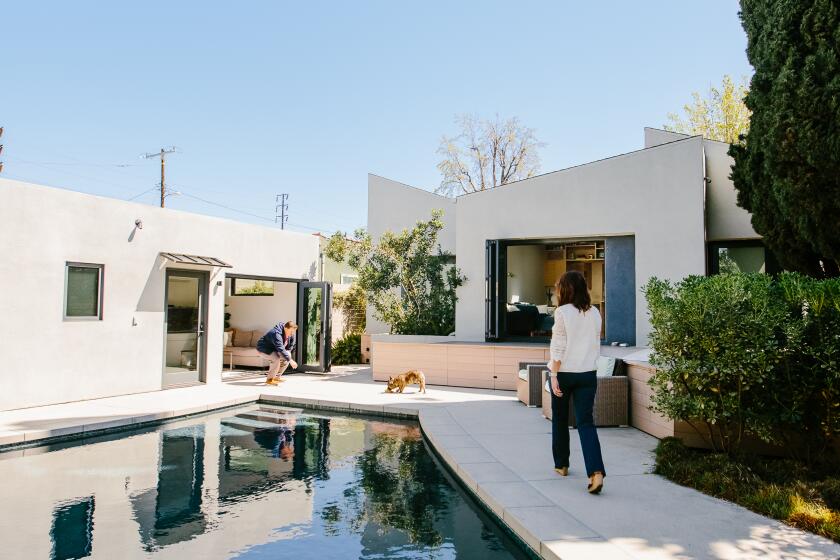Mission’s garden is raising legal, cultural issues
When Mission San Juan Capistrano built a rectory garden for parish priests this summer, there was one blessing they forgot to seek: the city’s.
Officials learned of the project -- replete with rose bushes, a fountain and an outdoor kitchen with a fireplace -- and ordered the work to stop, saying they believed it was on a portion of an old Native American cemetery.
Father Art Holquin, the mission’s pastor, said he decided to develop the area, which had become a dilapidated storage lot, into a private space in memory of Msgr. Paul Martin, his predecessor, who used to feed stray cats there.
“I viewed it as a private garden,” Holquin said. “That was a misjudgment. Now we’re working to correct that.”
The tiled outdoor kitchen stands unfinished, and mission officials have applied for permits to complete the work.
And although one event has already been held there -- a July reception attended by about 100 people -- they say the site will remain untouched until permits are granted.
But the work has prompted outcries from three of four rival factions of the Juaneno Band of Mission Indians, who say mission officials desecrated an ancestral burial site.
At a meeting of the San Juan Capistrano Cultural Heritage Commission on Tuesday, their representatives criticized the mission’s failure to secure the permits.
“We demand that the cemetery be reverted to its original state,” said Joe Ocampo, chairman of one of the Juaneno groups. The tribe, he insisted, deserves an explanation.
Joyce Perry, cultural resource director for another Juaneno group, said she was “saddened and disappointed that the mission administration didn’t follow the laws and honor the existence of the ancestors.”
Not everyone, however, agreed.
Chris Lobo, speaking for a third Juaneno tribal group, praised the mission for doing its part by informing Native Americans of the project and encouraging their participation. “The mission has not willfully violated the sacred places of the tribe,” he said.
In a statement, Holquin said he would consider improving other parts of the mission to offset the effect of the rectory garden.
Mission spokesman and docent Jim Graves said the cemetery, designated by the state as a sanctified Native American burial site, is believed to contain the remains of at least 2,000 people, though its exact boundaries are unknown.
--
More to Read
Sign up for Essential California
The most important California stories and recommendations in your inbox every morning.
You may occasionally receive promotional content from the Los Angeles Times.











